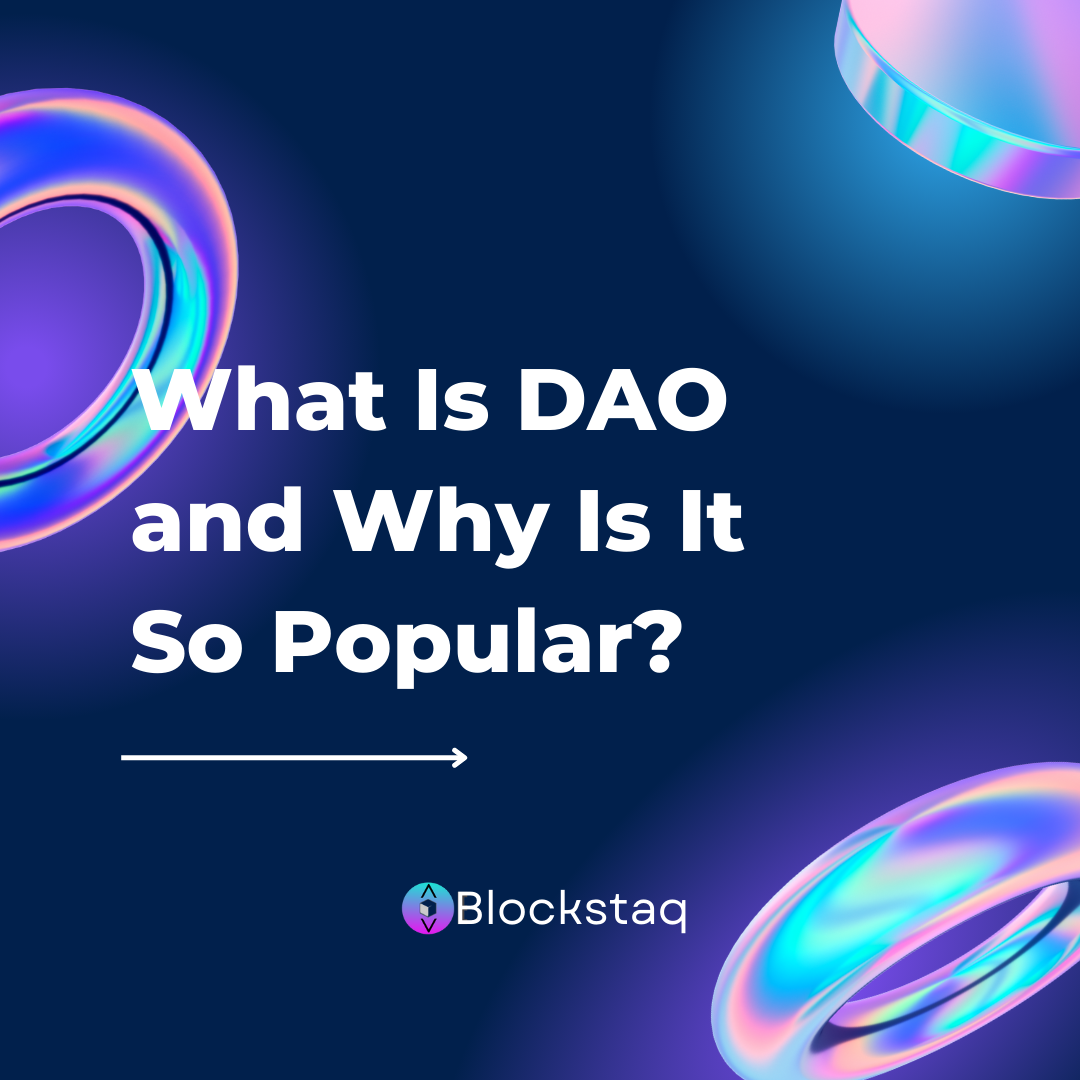The typical client-server network stores all necessary information in one location, making it simple to update. However, the network is managed by a variety of administrators who have different levels of access. Each member in a distributed P2P blockchain technology architecture network maintains, validates, and updates new entries.
The system is managed by everyone in the blockchain network, rather than just one authority. Each member is responsible for ensuring that all records and processes are in order, resulting in data validity and security.
Blockchains’ P2P design provides more security than traditional client-server networks because the dispersion of a large number of nodes generates an immune system against Denial-of-Service attacks.
Difference between Blockchain & Cryptocurrency
A blockchain is a decentralised ledger that records all transactions that occur over a peer-to-peer network, whereas cryptocurrency is a means of exchange that is produced and stored electronically in the blockchain that has a monetary worth.
What is BITCOIN
Bitcoin is a well-known digital money and payment system. It was the first publicly maintained decentralised digital currency whose ledger was kept via Blockchain.
Bitcoin is a distributed ledger technology implementation, and transactions on the Bitcoin Blockchain take place directly between users, without the involvement of an intermediary or third party.
Bitcoin is open-source; the architecture is public, which implies that nobody owns or controls Bitcoin, but anybody may join the network. There are no real Bitcoins; instead, balances are held on a public database that everyone has unrestricted access to, and all Bitcoin transactions are reviewed by a massive amount of computer power. Banks or governments do not distribute or fund bitcoins as an asset.
What is BITCOIN Mining
Bitcoin mining is the process of creating new bitcoins by solving a cryptographic challenge. Proof-of-Work requires miners to solve a challenging computational math problem. Bitcoin mining needs enormous quantities of electricity as well as a powerful processing infrastructure.
Miners get money by confirming transactions. They must verify 1 megabyte (MB) of transactions for this. The more miners who compete for a solution, the more complex the problem becomes, and vice versa.

Bitcoin mining is required to keep the database of transactions that is the foundation of bitcoin.
Miners have gotten more clever in recent years, utilising complicated equipment to speed up mining processes.
Bitcoin mining produces two outcomes. First, they receive fresh bitcoin when computers on the bitcoin network complete these difficult arithmetic tasks.
Second, bitcoin miners make the bitcoin payment network trustworthy and secure by verifying transaction information by solving mathematical problems.
Types Of Blockchain

- Public Blockchain
- Private Blockchain
- Federated/Consortium Blockchain
– Public Blockchain
It is also called permissionless blockchain. Without explicit authorization and permission, anybody may access the network and read, write, or participate in a public blockchain.
A public blockchain is decentralised, with no single body controlling the network.
Data on a public blockchain is secure because it cannot be modified or manipulated until it is verified on the blockchain.
For greater security, the public blockchain contains more sophisticated rules and a consensus process. Mining and adding a Block is computationally intensive. The processing power is likewise dispersed worldwide in this case.
Bitcoin and Ethereum are well-known instances of public blockchains.
– Private Blockchain
A private blockchain is administered by a network administrator, and members must get permission to join the network, making it a permissioned blockchain. The network is controlled by one or more companies, necessitating reliance on third-party transactions. Only the entities involved in the transaction will have knowledge of the transaction, and others will not be able to access it, i.e. transactions are private.
Some of the benefits of private blockchain include:
– Federated/Consortium Blockchain
A Consortium or Federated Blockchain, as opposed to a public blockchain, is a private, permissioned blockchain in which entities can only join the network with prior approval or vote.
This blockchain is a group-owned system in which single autonomy is gone. Permissions are granted to a group of businesses or persons.
In this case, more than one central node is in control, which allows pre-selected nodes to read, write, and audit the blockchain. Transactions may only be created, validated, and reviewed by consortium members.
This type of blockchain is appropriate for usage amongst organisations that often do business with one another. While these are more secure, they sacrifice decentralisation. This, however, is appropriate for enterprise use cases and business operations.
R3 Corda, for example.
Different Types of Blockchain Technologies

1- Bitcoin
Bitcoin is a well-known cryptocurrency and digital payment mechanism throughout the world. It was the first decentralised digital currency with an open blockchain ledger.
Bitcoin is a blockchain distributed ledger technology implementation, and transactions on the bitcoin blockchain take place directly between users, without the necessity of an intermediary.
Bitcoin is an open-source project, which implies that no one owns or controls it, but anybody may join.
There are no real Bitcoins; instead, balances are held on a public database that everyone has unrestricted access to, and all Bitcoin transactions are reviewed by a massive amount of computer power. Banks or governments do not distribute or fund bitcoins as an asset.
2- Ethereum
Vitalik Buterin established the Ethereum idea in 2013 because he was interested in leveraging blockchain technology for more than just cryptocurrencies. Ethereum is also an open-source software platform, based on Blockchain technology that enables developers to build and deploy decentralized applications
It offers a Decentralized Virtual Machine aka Ethereum Virtual Machine (EVM) which can execute scripts using an international network of public nodes.
Development for Ethereum was funded by an online public crowd sale in July-August 2014, by buying the Ethereum value token (Ether).
It allows us to create and run Smart Contracts and Distributed Applications (DApps) without any downtime, fraud, control, or intervention by a third party.
Ethereum is not just a framework but also a programming language running on a blockchain that lets developers create and publish distributed applications.
3- Hyperledger
Hyperledger is a multi-project open-source blockchain platform designed to improve blockchain technology across industries.
It is a worldwide partnership hosted by The Linux Foundation, with leaders from finance, banking, the Internet of Things, supply chains, manufacturing, and technology participating.
Hyperledger operates markets, data-sharing networks, micro-currencies, and decentralised digital communities.
It has the ability to significantly reduce the cost and complexity of getting things done in the real world. It acts as a home for several distributed ledger frameworks such as Hyperledger Fabric, Sawtooth, and Indy, as well as tools such as Hyperledger Caliper and libraries like as Hyperledger Ursa.
4- NEO
NEO was formerly known as AntShares (ANS), and it was formed in 2014 by Da Hongfei and Erik Zhang. On June 22, 2017, Antshares announced its intention to rename NEO.
NEO is a distributed network smart economy.
Soon after the renaming, the first ICO on the NEO network, Red Pulse Token (RPX), was launched.
Apart from the NEO cryptocurrency, it also has another crypto-token known as “GAS,” which was previously known as “ANC-Antcoins.”
The NEO feature set concentrates around instruments that allow developers to effectively launch and grow smart contract applications on the NEO network.
5- EOS
EOS is the premier open-source blockchain platform, enabling transaction transparency at the speed and scale required to address real-world problems.
EOS is a decentralised operating system for markets, data-sharing networks, micro-currencies, and digital communities.
The EOS blockchain aspires to be a decentralised operating system capable of supporting industrial-scale decentralised applications.
EOS intends to eliminate transaction costs. It promises to be capable of processing millions of transactions per second and is based on the DPOS consensus algorithm.
6- Corda
Corda is an open-source distributed ledger platform for enterprises. It is one of the most complex platforms for implementing corporate blockchain applications.
It is neither a blockchain nor a native cryptocurrency.
The nodes in this network are configured in an authenticated peer-to-peer network with no message broadcasting.
Corda is not bound to a single consensus algorithm since a single Corda network may have numerous notaries who supply their assurances using a range of different procedures.
Corda guarantees that data will only be shared with parties that have a ‘need to know.’ It was created to increase openness and confidence while maintaining privacy and security in ongoing conversations.
7- Quorum
Quorum is an open-source, permissioned Ethereum implementation that allows both transaction and contract privacy.
J.P. Morgan created an enterprise-focused version of the Ethereum Blockchain. It is a perfect application for processing private transactions at high speeds and throughput.
It is a fork of the ‘geth’ public Ethereum client with several protocol improvements to serve commercial requirements. The major goal of the Quorum project is to create an Ethereum client enterprise that enables businesses to adopt and benefit from blockchain technology.
In comparison to public Ethereum, Quorum offers various business functionalities, which are outlined below.
• Transaction privacy
• Multiple pluggable consensus algorithms appropriate for corporate use cases
• Enterprise-grade rights management (access control) for network nodes and participants




